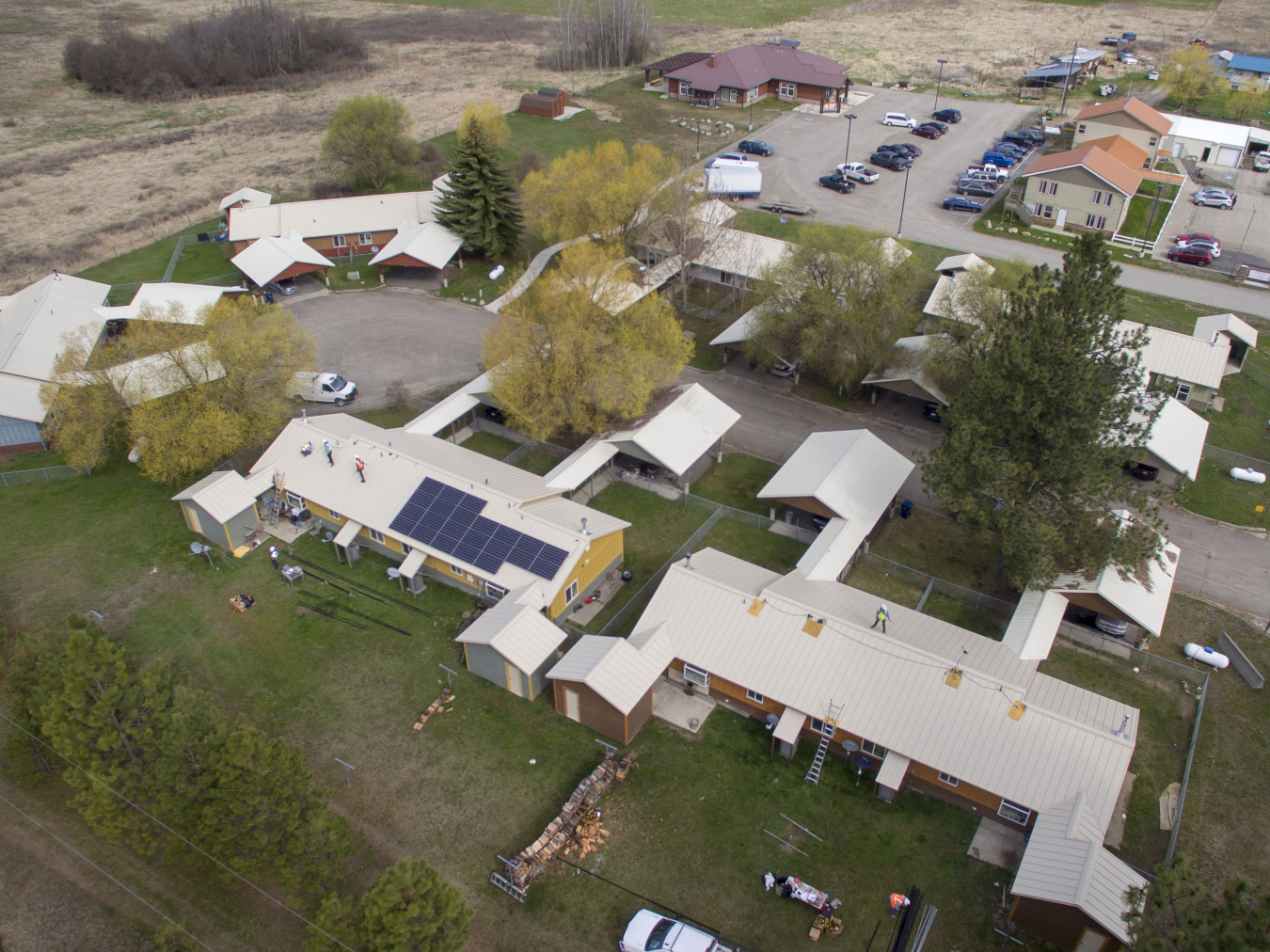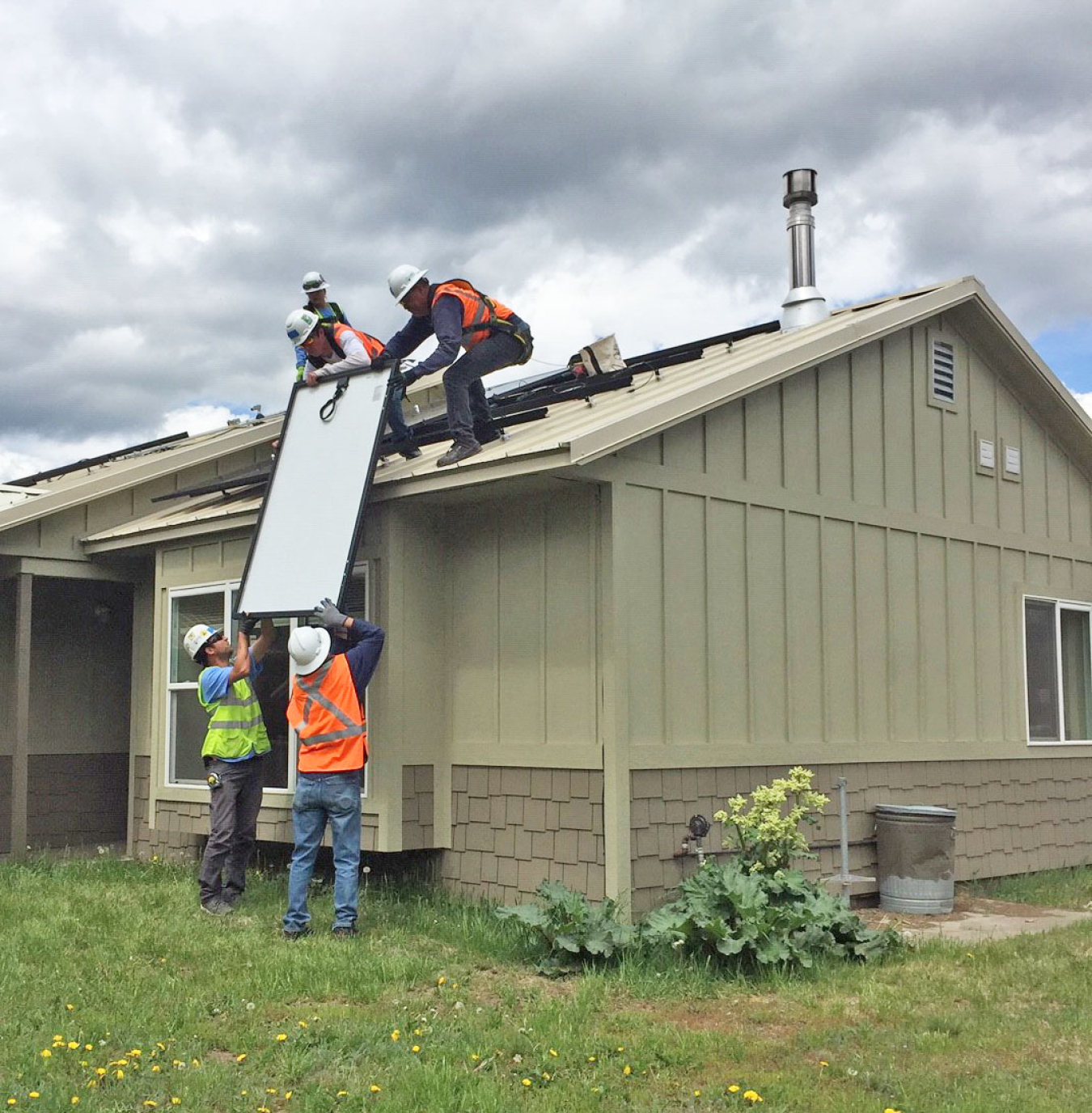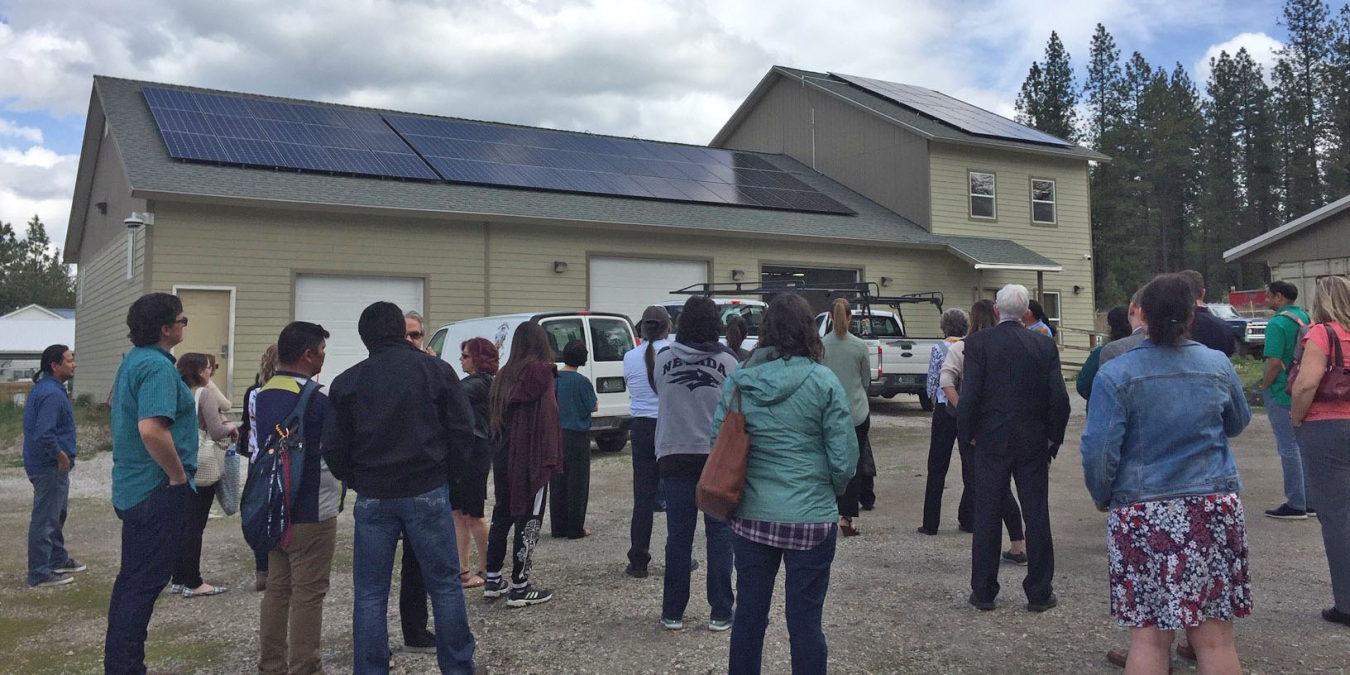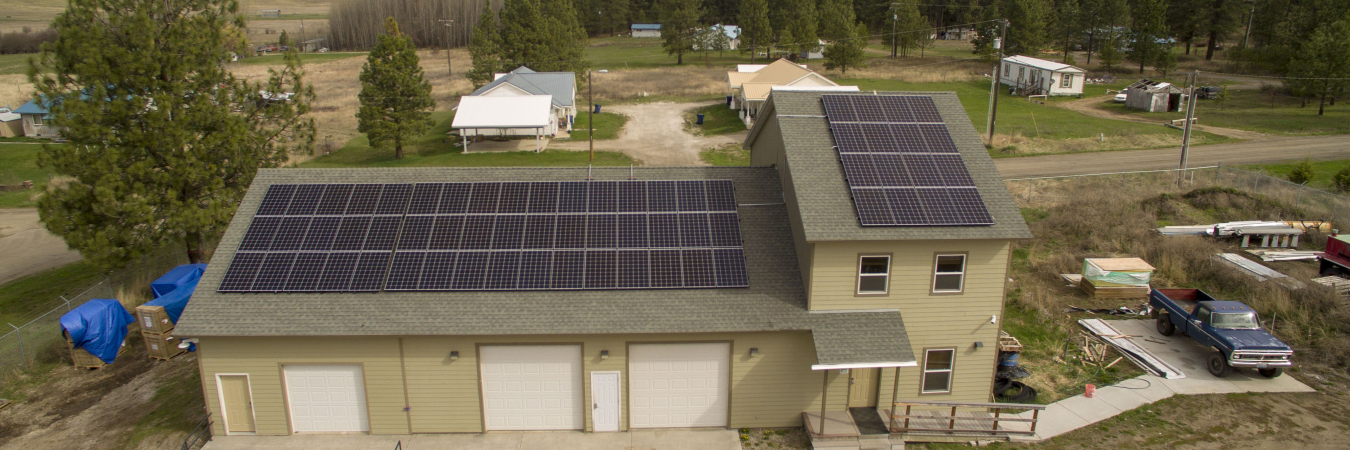When completed this summer, the Initiative will add 650 kilowatts of solar capacity to tribal buildings and save about $2.8 million over 30 years.
Office of Indian Energy Policy and Programs
June 19, 2019
A bird’s-eye view of the in-progress solar installations on the Spokane Indian Reservation, through the DOE co-funded Children of the Sun Solar Initiative. Photo courtesy of the Spokane Indian Housing Authority
Hear about the project from Timothy Horan, executive director of the Spokane Indian Housing Authority
In 2016, the Spokane Indian Reservation in Wellpinit, Washington, lost 18,000 acres and 14 homes to a wildfire. It also burned 80 power poles on the Spokane Indian Tribe’s transmission line and cut power to the water pumps, leaving its members without power and water for a week—prompting an awakening within the Tribe.
“It made us realize, from the Housing Authority perspective, just how vulnerable and how unprepared we were to deal with that kind of a natural disaster,” Timothy Horan, executive director of the Spokane Indian Housing Authority, said. “It shut down everything during that time. We had to evacuate our seniors. We were in the most vulnerable position.”
Three years later, the Housing Authority is halfway through the installation of a $2-million solar initiative, funded in part by the U.S Department of Energy (DOE) Office of Indian Energy, that will both increase resilience to environmental threats and promote sovereignty for the Tribe in the form of energy independence. When completed this summer, the Children of the Sun Solar Initiative (COSSI) will add 650 kilowatts (kW) of solar capacity to tribal buildings and save the community an estimated $2.8 million over the next 30 years.
Several residential homes are included in the COSSI project, and their energy cost savings are already apparent.
Those homes were paying about $240 a month on their utility bills—less in the summer, more in the winter, and this is on average—but now they’re just paying the basic fees: $8.55.

The installation team secures solar panels to a roof as part of the Spokane Indian Tribe’s DOE co-funded Children of the Sun Solar Initiative. Photo from Tweedie Doe, DOE
Adding solar energy to these homes delivers benefits beyond cost savings. Winter in Spokane can last from late November through April, and wood burning usually begins in October as temperatures drop. Alternative heating sources are propane and wood. The wood in the area is primarily pine, which doesn’t produce a great deal of heat—meaning more has to be collected, split, and stacked, which can burden older members of the Tribe.
So far, the Tribe has finished installing solar on three buildings—one of which is its fish hatchery, whose complex architecture created some hurdles though special electrical engineering needs.
Salmon made up about 90%–95% of the Tribe’s protein source before dams were built on nearby rivers, which prevent the salmon from making it to them. Now the Tribe keeps a lake on the Reservation stocked from the hatchery.
The fish hatchery was not part of the original project plan, but the solar power—and panels—had to be somewhat redistributed after the Housing Authority learned about a net-metering regulation that limits PV system size to no more than 100 kW in Washington. Horan said the Tribe is working with state legislature to get that raised to 1,000 kW.
Finding the bright side, Horan said, “It does spread the benefit out more broadly—which isn’t a bad thing—and makes it more visible.”

The Spokane Indian Tribe recently celebrated the installation of solar panels on several buildings on the Tribe’s reservation in Washington State. Photo from Tweedie Doe, DOE
In May, the Spokane Tribe held a community celebration for the project that was attended by more than 100 members of the Tribe, leaders from nearby tribes, Washington State government officials, and senior national and federal agency representatives—including Tweedie Doe, the DOE Office of Indian Energy project monitor for the COSSI grant.
“Listening to the children singing songs and to tribal leaders telling stories, watching tribal youth install solar panels on family homes, and sharing salmon with the community at the COSSI celebration helped me understand the broader impact of this DOE co-funded project,” Doe said. “I left knowing that this COSSI project will generate clean energy and save the Tribe money for years to come, and that this project is tribal resiliency and sustainability in practice.”
True to the project’s name, the solar project is helping to secure the Tribe’s energy future by providing a hands-on, in-person education opportunity for students in the community.
“We really wanted to engage with the young people because we wanted to get them thinking about this as a possible career and hopefully raise up a generation of young people who can go out and do this work and help us maintain what we put in place,” Horan said.
Training a tribal workforce to carry renewable energy forward can be a means to develop energy independence, self-reliance, and sovereignty.
COSSI isn’t the first renewable energy grant the Tribe has received from DOE. About 10 years ago, the DOE Weatherization Assistance Program awarded the Tribe funding to weatherize homes. The Spokane Indian Housing Authority manages the majority of homes on the reservation, and Horan estimates the Tribe has weatherized close to 200 over the past 10 years.

One of the Spokane Tribe’s newly installed, cost-saving solar arrays. Photo courtesy of the Spokane Indian Housing Authority
Horan said looking forward, the Tribe hopes to do even more with energy development—specifically another project focused on bringing benefits to additional residential units.
“In this first project, we did a mix of tribal business and administrative buildings, and public safety, senior center, and longhouse [buildings], and we did some residential units—but we would like to come back and do a second project [with more] residential units so those savings are much more widespread,” he said. “The reality of having the solar panels here and getting used to them is sinking in, as people see them as we get them connected to the grid.”
Abrahamson said the Tribe is expected to complete the COSSI project sometime in mid-July.
Learn more about the Children of the Sun Solar Initiative.

